With everything from delicious snacks to mouth-watering dishes and desserts, you’ll never go hungry on this sunny island
By Denise Rejec
Malta is not only synonymous with sea and sun. It’s also known for its tasty and varied Mediterranean cuisine combined with influences from Sicily, Italy, England, France, and North Africa. Maltese people take their food pretty seriously, which could be a good thing because you’ll find that the dishes presented to you at table will be rather plentiful. You’ll never go hungry in Malta!
Here’s what you can expect from an eating spree on the Maltese Islands. Enjoy your meal, or as the Maltese say: l-ikla t-tajba!
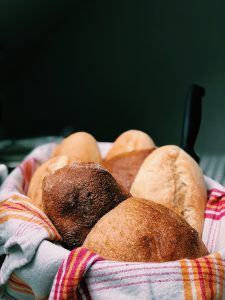 MALTESE BREAD
MALTESE BREAD
This is a Maltese staple. The French have their baguette, while the Maltese have this wonderful and very popular Maltese Bread or ‘Ħobż tal-Malti’. With its crusty, rounded exterior, and an irresistibly fluffy interior, you’ll never look elsewhere after trying this local bread.
ĦOBŻ BIŻ-ŻEJT
What’s that? Literally translated from Maltese as ‘bread with oil’, this is a pimped up version of the good old Maltese loaf. You can have it in its most simplest form rubbed with olive oil and tomato paste, seasoned with salt and pepper, or you can dress it up with typical ingredients like tuna, capers, onions, ġbejniet, and sun-dried tomatoes. This snack is popular at lunch time, especially in summer, as it’s made in no time at all and tastes extra delicious after a swim in Malta’s salty sea. It also offers tourists a true taste of Malta in one single bite.
FTIRA
This is the flattened version of the Maltese loaf, and just like the latter, it comes in various sizes. You can fill this with whatever you like, though the Maltese love it with the same ingredients that are used for their ħobż biż-żejt, which by the way you may garnish with some fresh basil or mint. So yumm!
KAPUNATA
This Sicilian-influenced summer dish is made from fresh tomatoes, capers, aubergines and green peppers, and can be enjoyed by soaking up its juices using fresh and crusty Maltese bread.
MINESTRA
When winter comes knocking at your door, you should try the Maltese minestra. Throw in some barley or small pasta; lentils; beans; vegetables such as carrots, marrows, kohlrabi, and pumpkin; potato; and allow them to cook in vegetable stock. Finally season and top with parsley, and indulge in this heartwarming soup that’s paired well with Maltese bread.
 WIDOW’S SOUP
WIDOW’S SOUP
Any suitors out there? Okay, joking apart, this is another Maltese soup that can warm your humid winters. Even though ‘soppa tal-armla’ is simple (hence the name) with ingredients even a poor widow could afford to buy, it’s a tasty blend of potatoes and vegetables, enhanced with the flavour from ġbejniet and broad beans.
PASTIZZI
These are Malta’s most treasured and desired national fast food. They come in the form of round or diamond-shaped puff-pastry pockets filled with either ricotta or mushy peas. You can find these freshly baked in small shops all over the island called ‘pastizzerias’, or in some bars and cafes. Watch it though! Eating too many of these could compromise your waistline.
TIMPANA
A popular and very filling baked pasta dish, timpana is usually available in pastizzerias or baked in Maltese homes, though you can also enjoy it in some Maltese restaurants serving local food. It makes for an extremely satisfying meal as it contains meat, vegetables, bolognese sauce, and cheese. All this is not enough for a hungry Maltese stomach, so it also comes with a golden-brown shortcrust or puff-pastry lid.
IMQARRUN
This is a dressed-down version of the timpana as it comes lidless (without the pastry top). It’s a baked macaroni and cheese dish with the addition of a red meat sauce, and a few hard-boiled eggs thrown in at times.
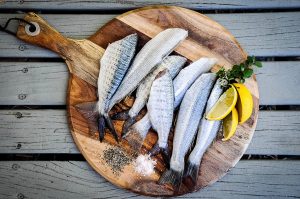 FISH
FISH
Fish has always been a huge hit in Malta. That’s what you’d expect from an island surrounded by seawater, right? You’ll find locally caught sea bass and sea bream, grouper, tuna, as well as other species. The most popular fish dish is undoubtedly the lampuka pie because it contains a healthy dose of meaty ‘lampuka’ (aka mahi-mahi or dolphinfish) cut up into chunks and mixed into a pungent tomato sauce containing olives and capers.
RABBIT
Served either as a stew or fried in white wine and garlic, this immensely popular platter can be had at one of the many traditional restaurants that are mainly clustered around the Mgarr area, though you can also come across them in other parts of Malta. The rabbit is typically accompanied by fries or roasted potatoes.
BEEF OLIVES
Known more commonly in Malta as ‘braġioli’, these sausage-like meat rolls are a delicious concoction of ground veal or beef mixed with bacon, garlic, onion, parsley, hard-boiled egg, and breadcrumbs, wrapped in beef topside, and slow-cooked in a rich, red wine sauce.
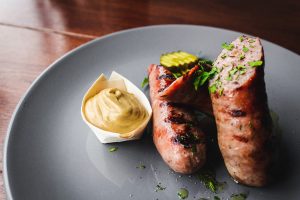 MALTESE SAUSAGE
MALTESE SAUSAGE
Talking about sausage-like meat rolls, we can’t ignore the ‘Zalzett Tal-Malti’. They pack an interesting flavour punch with their tasty Maltese pork (ground) infused with crushed coriander, peppercorns, garlic, parsley, and other spices. They’re also great on the barbecue.
QAGĦAQ TAL-GĦASEL
On to the desserts, qagħaq tal-għasel or honey rings are pastry stuffed with blackstrap molasses, star anise, cloves, and all spice. They’re super comforting when eaten fresh and their interior is as soft as honey. So comforting, that even though they’re meant to be a Christmas treat, you’ll see many Maltese enjoying these at any time of year.
IMQARET
Now these make for another round of sinful indulgence, second to the pastizzi. These deep fried filo pastry and date rolls can be smelt from miles away, so it’s very hard to resist them. But you should give in to the temptation in this case. You’ll often see them being sold at mini kiosks around Malta particularly during village feasts. Make sure to enjoy them hot!
FIGOLLI
We’re going to end our list with a grande finale. True, you’ll have to hold on till Easter time before you can try these, but they’re definitely worth the wait. Figolli are flat cakes made from lemon-zest infused pastry with a juicy almond filling or marzipan, and decorated with brightly-coloured icing sugar or chocolate, and very often half a chocolate Easter egg. If you’re not too much of a sweet tooth, you can have a whale of a time simply admiring their interesting Easter-themed shapes. Or not?
We hope you’ve enjoyed our food tour of Malta. We can certainly bet that you’ve opened up a great appetite while reading this. Again, we wish you l-ikla t-tajba!
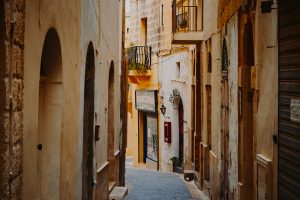 DESIRABLE LOCATION
DESIRABLE LOCATION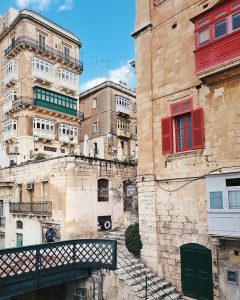 PLEASURE OR DISASTER?
PLEASURE OR DISASTER? HOBBIES AND FREE TIME
HOBBIES AND FREE TIME
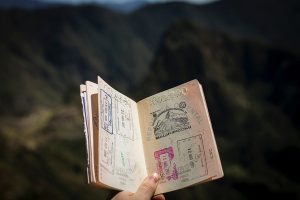 If you’re thinking of travelling through Malta or staying here for a certain period of time for leisure, work, or study purposes, then you’ll need a specific type of visa. There are some exceptions though. Not everyone needs a visa to enter Malta, unless they’re staying for more than three months. We’ll outline all visa types below for your clarification.
If you’re thinking of travelling through Malta or staying here for a certain period of time for leisure, work, or study purposes, then you’ll need a specific type of visa. There are some exceptions though. Not everyone needs a visa to enter Malta, unless they’re staying for more than three months. We’ll outline all visa types below for your clarification.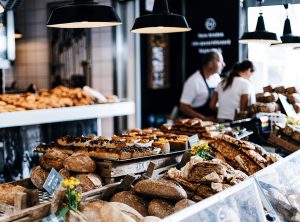 SHOPPING FOR FOOD
SHOPPING FOR FOOD DRINKS
DRINKS EATING OUT
EATING OUT ACCOMODATION
ACCOMODATION TRANSPORTATION
TRANSPORTATION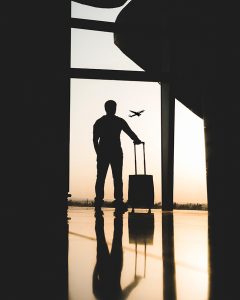 Malta has long been considered an interesting prospect for expats seeking an easy-going, sea-and-sun Mediterranean lifestyle. With English being one of the country’s official languages, and with a multitude of jobs available, specially in the iGaming and tourism sectors, Malta is doubly attractive.
Malta has long been considered an interesting prospect for expats seeking an easy-going, sea-and-sun Mediterranean lifestyle. With English being one of the country’s official languages, and with a multitude of jobs available, specially in the iGaming and tourism sectors, Malta is doubly attractive.
 MALTESE BREAD
MALTESE BREAD  WIDOW’S SOUP
WIDOW’S SOUP FISH
FISH MALTESE SAUSAGE
MALTESE SAUSAGE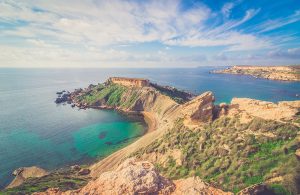 Malta offers numerous gorgeous places that should definitely be on your bucket list. There are so many awe-inspiring locations in this tiny country, that it’s impossible to mention them all. But here’s the
Malta offers numerous gorgeous places that should definitely be on your bucket list. There are so many awe-inspiring locations in this tiny country, that it’s impossible to mention them all. But here’s the 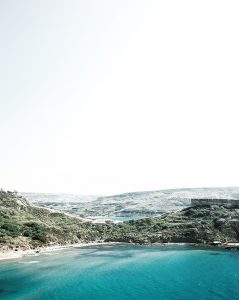 TRIO OF BEACHES: GOLDEN BAY, GHAJN TUFFIEHA, GNEJNA
TRIO OF BEACHES: GOLDEN BAY, GHAJN TUFFIEHA, GNEJNA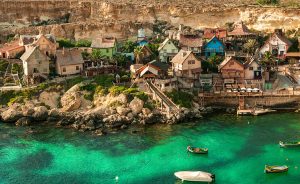 POPEYE VILLAGE
POPEYE VILLAGE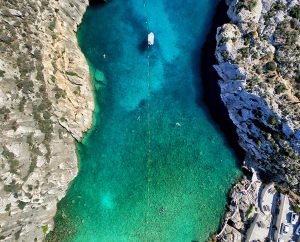 GOZO
GOZO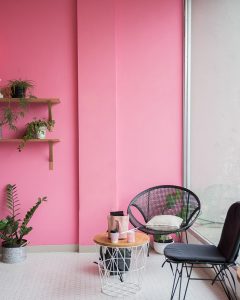 We’ve come up with this list of five top places to rent an apartment in Malta not just for their accessibility and central position on the island, but also because they provide for all your needs. You can walk to work rather than take a car and waste time in traffic, explore a range of eateries from casual take-away joints to high-end restaurants, shop in the multitude of supermarkets and shopping centres, party in the hippest nightlife district, and relax on the coast that’s dotted with bars and lidos. These towns are also serviced by major bus routes. It’s no wonder that all five areas are extremely popular with locals and expats alike.
We’ve come up with this list of five top places to rent an apartment in Malta not just for their accessibility and central position on the island, but also because they provide for all your needs. You can walk to work rather than take a car and waste time in traffic, explore a range of eateries from casual take-away joints to high-end restaurants, shop in the multitude of supermarkets and shopping centres, party in the hippest nightlife district, and relax on the coast that’s dotted with bars and lidos. These towns are also serviced by major bus routes. It’s no wonder that all five areas are extremely popular with locals and expats alike.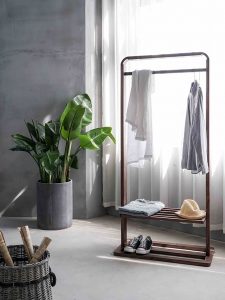 This modern town between Sliema and Msida (next on our Top 5 List) is quickly shaping up to become one of Malta’s sought-after office hubs. Gzira has shops on nearly every street to suit all needs, making it equally enticing for those looking to rent a flat. Gzira residents can enjoy close proximity to the national swimming pool, the University of Malta and its fitness centre plus running track, and stunning views of Marsamxett Harbour with Valletta’s imposing historical skyline right opposite.
This modern town between Sliema and Msida (next on our Top 5 List) is quickly shaping up to become one of Malta’s sought-after office hubs. Gzira has shops on nearly every street to suit all needs, making it equally enticing for those looking to rent a flat. Gzira residents can enjoy close proximity to the national swimming pool, the University of Malta and its fitness centre plus running track, and stunning views of Marsamxett Harbour with Valletta’s imposing historical skyline right opposite. 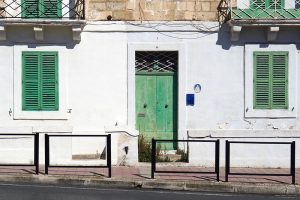 Meet St Julians’ next door neighbour. This equally popular resort town features a long seaside promenade that leads all the way from St Julian’s to Gzira and Manoel Island. You have numerous bars, eateries and shops all along, with points of interest including a 17th-century watchtower, and Tigné’s historical fort with its business and shopping centre. On the south side promenade known as ‘The Strand’ or ‘The Ferries’, you can enjoy views overlooking the capital city of Valletta. This part of town is also equipped with great ferry connections to Valletta, as well as boats that are ready to take you on a harbour cruise or all the way to Comino and the Blue Lagoon. Together with St Julian’s and Gzira, this is one of
Meet St Julians’ next door neighbour. This equally popular resort town features a long seaside promenade that leads all the way from St Julian’s to Gzira and Manoel Island. You have numerous bars, eateries and shops all along, with points of interest including a 17th-century watchtower, and Tigné’s historical fort with its business and shopping centre. On the south side promenade known as ‘The Strand’ or ‘The Ferries’, you can enjoy views overlooking the capital city of Valletta. This part of town is also equipped with great ferry connections to Valletta, as well as boats that are ready to take you on a harbour cruise or all the way to Comino and the Blue Lagoon. Together with St Julian’s and Gzira, this is one of 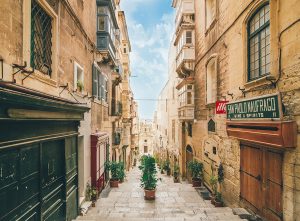 This is not a town, neither a village. But we can’t not mention Valletta. Fun fact: This walled city is not as old as you might think! What gives this away? The Knights of St John, in the 1500s, skillfully crafted a plan of streets forming a regular grid to cater for water and sanitation, as well as free circulation of air. The streets incline and descend in a similar fashion to San Francisco’s—a great visual addition to Valletta’s picturesque streetscape of Baroque churches, palaces, houses with different coloured balconies (typically red, green, and blue), and old, wooden shop facades. Valletta is a must-see UNESCO World Heritage Site.
This is not a town, neither a village. But we can’t not mention Valletta. Fun fact: This walled city is not as old as you might think! What gives this away? The Knights of St John, in the 1500s, skillfully crafted a plan of streets forming a regular grid to cater for water and sanitation, as well as free circulation of air. The streets incline and descend in a similar fashion to San Francisco’s—a great visual addition to Valletta’s picturesque streetscape of Baroque churches, palaces, houses with different coloured balconies (typically red, green, and blue), and old, wooden shop facades. Valletta is a must-see UNESCO World Heritage Site.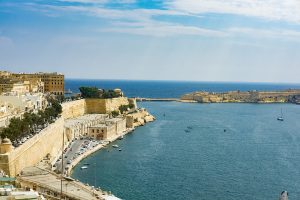 Facing Valletta, on the opposite side of the Grand Harbour, lie Malta’s older trio of cities—Vittoriosa (or Birgu in Maltese), Senglea (Isla), and Cospicua (Bormla). Known collectively as the Three Cities, they offer a captivating insight into Malta’s maritime fortunes. Each was critical to the defence of the island, which explains their strategic position right across from Valletta, with Vittoriosa and Senglea being the most prominent as they jut out into the Grand Harbour. All three are enclosed by a huge line of fortifications known as the Cottonera Lines, which were also built by the Knights. The narrow streets and wine bars of Birgu, and the waterfront promenade of Birgu and Isla are unmissable.
Facing Valletta, on the opposite side of the Grand Harbour, lie Malta’s older trio of cities—Vittoriosa (or Birgu in Maltese), Senglea (Isla), and Cospicua (Bormla). Known collectively as the Three Cities, they offer a captivating insight into Malta’s maritime fortunes. Each was critical to the defence of the island, which explains their strategic position right across from Valletta, with Vittoriosa and Senglea being the most prominent as they jut out into the Grand Harbour. All three are enclosed by a huge line of fortifications known as the Cottonera Lines, which were also built by the Knights. The narrow streets and wine bars of Birgu, and the waterfront promenade of Birgu and Isla are unmissable.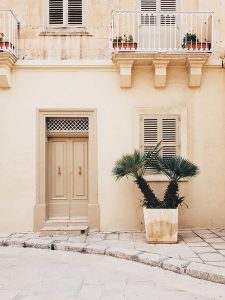 Rabat’s neighbouring Mdina (aka Città Vecchia or Città Notabile) is Malta’s former capital. Sitting majestically on a promontory that overlooks the surrounding countryside, and dominating with its picturesque skyline, it offers impeccable opportunities for a photo shoot. Just picture golden, old citadel walls and a red church dome standing composed against the sunset sky, medieval palaces, grand Baroque buildings, and quaint narrow streets. As the sun sets, Mdina’s curious passageways don a mysterious aura, the soft glow emanating from the wrought-iron street lamps infusing the shadows with a calmness that brings serenity to anyone roaming the ‘Silent City’.
Rabat’s neighbouring Mdina (aka Città Vecchia or Città Notabile) is Malta’s former capital. Sitting majestically on a promontory that overlooks the surrounding countryside, and dominating with its picturesque skyline, it offers impeccable opportunities for a photo shoot. Just picture golden, old citadel walls and a red church dome standing composed against the sunset sky, medieval palaces, grand Baroque buildings, and quaint narrow streets. As the sun sets, Mdina’s curious passageways don a mysterious aura, the soft glow emanating from the wrought-iron street lamps infusing the shadows with a calmness that brings serenity to anyone roaming the ‘Silent City’.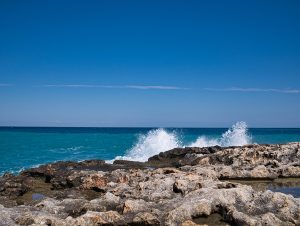 If you’re after a typical Maltese village away from the crowds, surrounded by unspoilt nature, then this is it. The village core is host to an imposing parish church dedicated to St Nicholas that overlooks the main square. Siggiewi is also known for its not-so-quiet grand feast and fireworks held in June in honour of its patron saint, and also for hosting the traditional Easter walk starting at the village square and ending at the famous Laferla Cross perched on a hill outside the village. It’s an amazing sight at night to see the ‘fjakkoli’ or fire lanterns guiding the way.
If you’re after a typical Maltese village away from the crowds, surrounded by unspoilt nature, then this is it. The village core is host to an imposing parish church dedicated to St Nicholas that overlooks the main square. Siggiewi is also known for its not-so-quiet grand feast and fireworks held in June in honour of its patron saint, and also for hosting the traditional Easter walk starting at the village square and ending at the famous Laferla Cross perched on a hill outside the village. It’s an amazing sight at night to see the ‘fjakkoli’ or fire lanterns guiding the way. 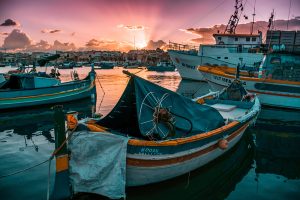 This is your typical fishing village that offers a flea and fish market on Sunday mornings, seaside restaurants specialising in fish, bright-coloured fishing boats… you get the picture? While in Marsaxlokk, you should also explore Ghar Dalam cave, and take a swim in the nearby and natural St Peter’s Pool that’s great for snorkelling and jumping off low cliffsides.
This is your typical fishing village that offers a flea and fish market on Sunday mornings, seaside restaurants specialising in fish, bright-coloured fishing boats… you get the picture? While in Marsaxlokk, you should also explore Ghar Dalam cave, and take a swim in the nearby and natural St Peter’s Pool that’s great for snorkelling and jumping off low cliffsides. Situated adjacent to Bugibba, Qawra is also popular among kids and adults alike, with its many hotels, bars, restaurants and other tourist facilities, but with the added bonus of serving as home to the modern Malta National Aquarium. It’s also equipped with a more sophisticated children’s play area with an underwater theme and unusual climbing structures. It will certainly be a hit with your kids. Both Qawra and Bugibba have made it to the list of top places for renting an apartment.
Situated adjacent to Bugibba, Qawra is also popular among kids and adults alike, with its many hotels, bars, restaurants and other tourist facilities, but with the added bonus of serving as home to the modern Malta National Aquarium. It’s also equipped with a more sophisticated children’s play area with an underwater theme and unusual climbing structures. It will certainly be a hit with your kids. Both Qawra and Bugibba have made it to the list of top places for renting an apartment.
